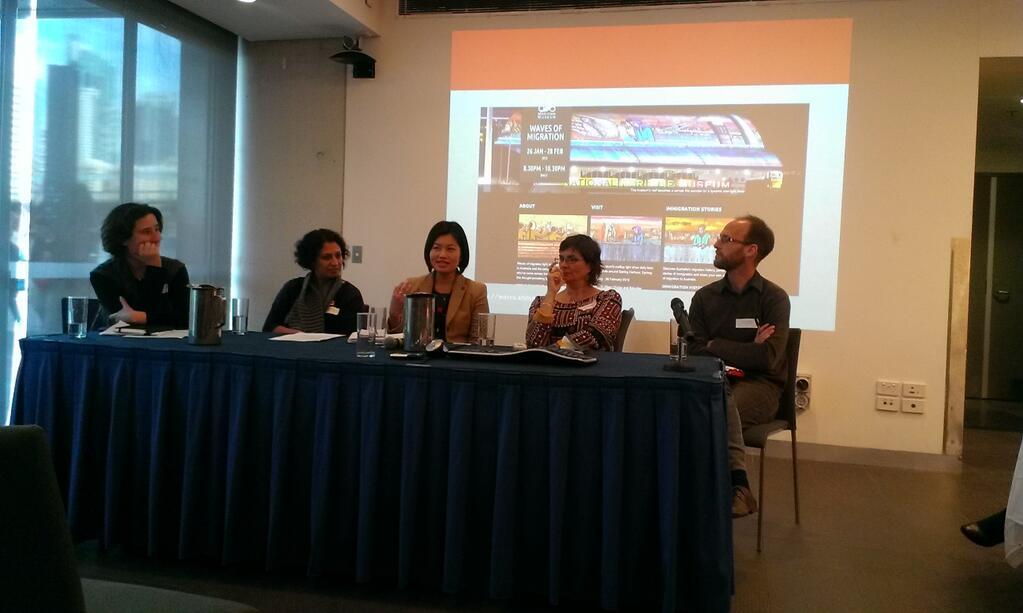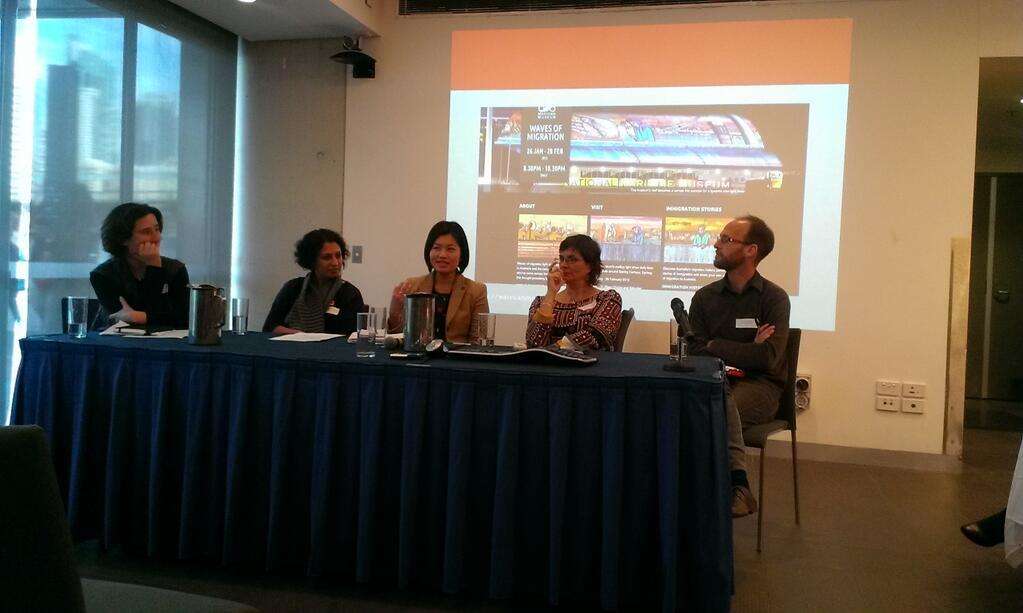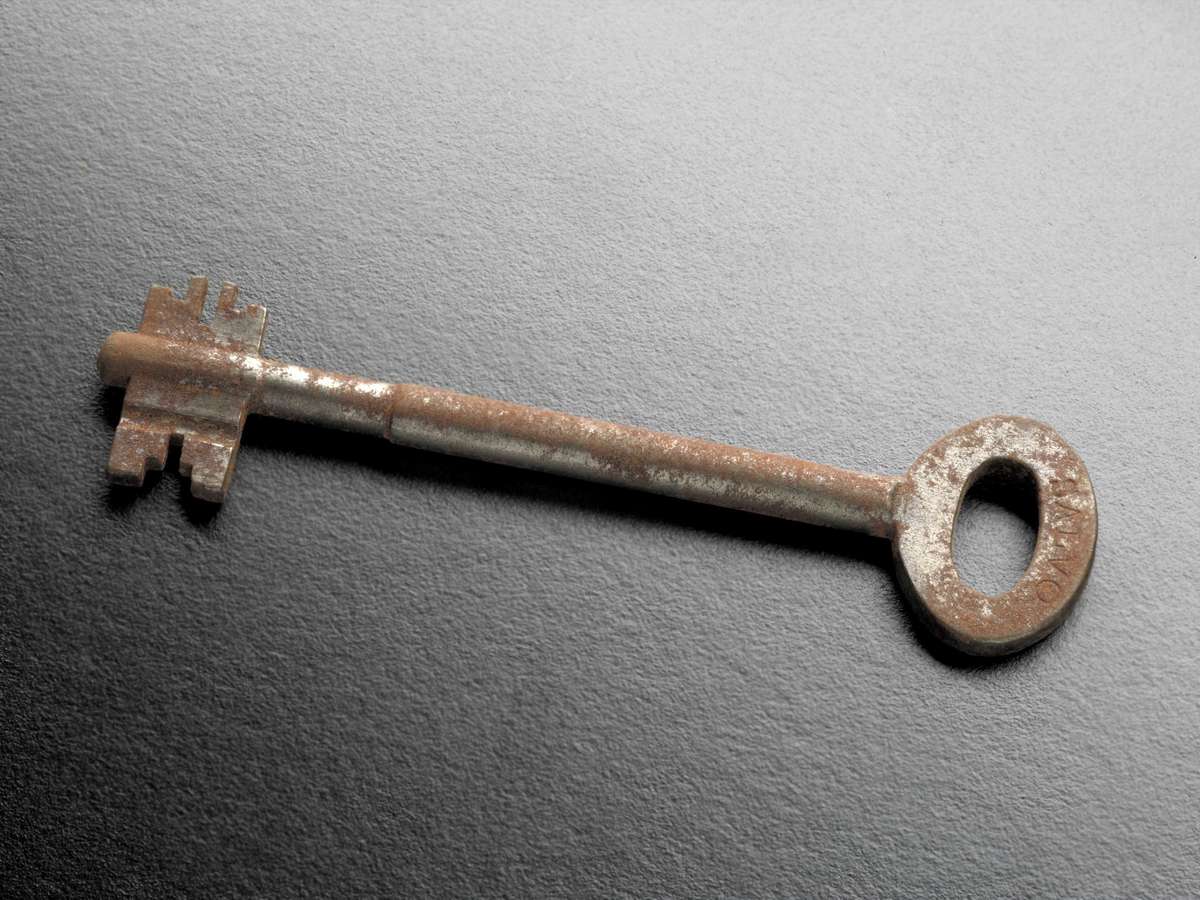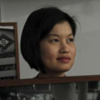
Last week I was invited to speak about the museum’s work at the Suitcases, boats and bridges: telling migrant stories in Australian museums workshop, organised by Dr Nina Parish from the University of Bath and Dr Chiara O’Reilly from the University of Sydney. The workshop brought together academics, museum professionals and museum studies students to discuss how migrant stories have been collected and articulated in a number of Australian museums, ranging from large government-funded institutions such as ours, to smaller regional, suburban or volunteer-run museums.
Suitcases and boats in Passengers, the museum’s permanent exhibition about Australia’s immigration history. Photographer Andrew Frolows
Our museum was a fitting venue for the workshop, seeing as we have plenty of suitcases and boats in our collection! But what I was really interested in was the ‘bridges’ aspect – how museums can bridge those tensions between official history and personal experience; between cultures, communities and generations; between physical and virtual museum spaces; and between academia and museum practice.
The latter issue was well-addressed by the workshop, which balanced academic perspectives on multiculturalism with engaging examples of museum practice. Padmini Sebastian, manager of Melbourne’s Immigration Museum, discussed her institution’s role in deconstructing stereotypes and creating a forum for multiple voices.

Speakers at the Suitcases, boats and bridges workshop, Sydney, 2013. Photographer Gina Hammond
Dr Gwenda Tavan from La Trobe University and Dr Aurelien Mondon from the University of Bath provided an overview of the state of multiculturalism in Australia today, from historical policies of assimilation and integration to the current mainstreaming of extreme right politics. As a museum curator I was particularly interested in the issues raised by this panel, which prompted me to think about how academics and museum professionals can work more closely together. After all, what we research and collect today will profoundly shape the kind of history we can tell in the future.
Dr Nina Parish discussed the place of culturally-specific versus cross-cultural exhibitions, while Dr Chiara O’Reilly looked at how objects have been used to tell migrant stories, drawing on examples from our museum’s collection, such as the house door key belonging to Jewish immigrant Valerie Lederer and the handkerchief carried by Hedayat Osyan, who fled from Afghanistan to Australia in 2009.

Valerie Lederer’s front door key to her family’s house in Vienna, 1938. ANMM Collection Gift from Walter and Jean Lederer
Dr O’Reilly and Dr Parish’s research aims to help European museums learn from Australia’s experience of representing migration and multiculturalism in museums. As Dr Parish says, ‘Today four out of every 10 Australians are either migrants or the children of migrants. The challenges this has brought about in constructing identity coupled with long-running debates around the value of a multicultural society are highly relevant to debates in Europe as the European Union deals with its expansion and growing immigrant population. Examples from Australian museums are instructive with regard to representing integration and different communities within the museum space.’
For me one of the most powerful themes that recurred throughout the day was our common humanity and the role that museums can play in illuminating shared histories within a transnational framework. The Suitcases, boats and bridges workshop highlighted some of the exciting museological challenges for the future while also showing that Australian and European museums have much to learn from each other.
Kim Tao
Curator, Post-Federation Immigration
